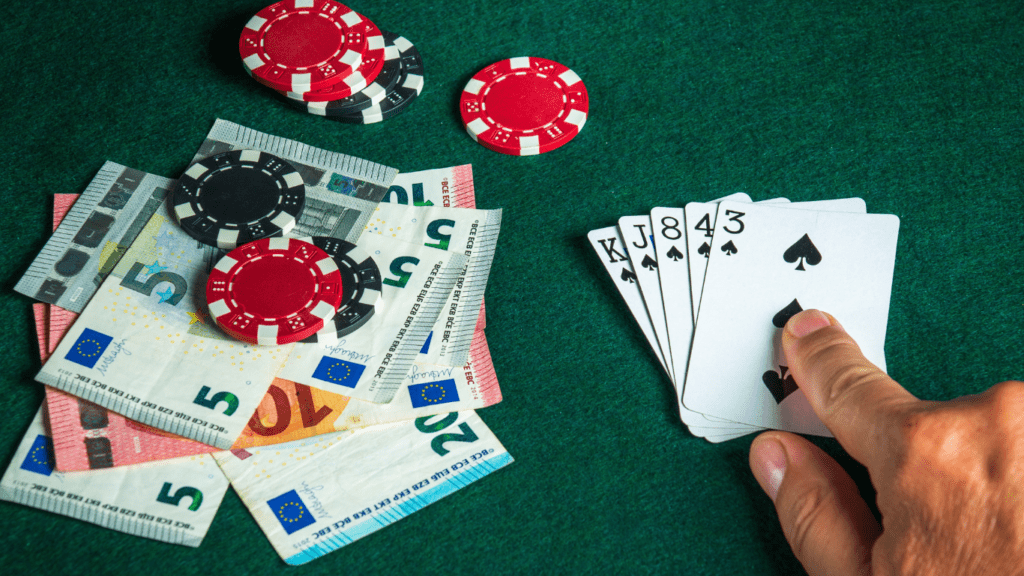Why Bankroll Management Matters
Bankroll management is crucial for anyone serious about gambling. It acts as a financial safeguard, ensuring you don’t risk more money than you can afford to lose. By setting limits, I control my losses and avoid falling into the trap of chasing them.
Effective bankroll management also maximizes my gambling experience. When I manage my money wisely, I prolong my playtime and enjoy the games without the stress of financial pressure. This wiser approach allows me to make more calculated decisions, thereby enhancing my chances of success over the long run.
Poor bankroll management often leads to impulsive behavior. When I don’t set limits, the temptation to make irrational bets skyrockets. This lack of control can quickly deplete my resources, leading to significant financial losses and even emotional strain.
A well-managed bankroll serves as a measurement tool for my gambling activities. Over time, I can track my expenditure, identify patterns, and make informed adjustments to my strategies. This ongoing process helps me become more disciplined and knowledgeable, ultimately making me a more successful gambler.
Setting Up Your Bankroll
Establishing a bankroll is the foundation of effective bankroll management. It involves setting clear financial limits to ensure gambling remains both enjoyable and sustainable.
Determining Your Budget
I start by assessing my overall financial situation. This involves reviewing my income, expenses, and savings. I only set aside an amount I can afford to lose, known as my disposable income. For example, if my monthly income is $4,000 and my expenses are $3,500, I have $500 in disposable income. I never dip into essential funds like rent or utilities to finance gambling activities.
Allocating Funds for Different Games
Once I determine my total bankroll, I allocate specific amounts for different games based on their volatility and my skill level. High-variance games like poker or blackjack require a larger portion of the bankroll due to their unpredictable nature. For instance, if my total bankroll is $1,000, I might allocate $600 to poker and the remaining $400 to slots or lower-variance games. This strategic allocation helps minimize risks and maximizes potential returns.
Strategies for Effective Bankroll Management

Effective bankroll management relies on disciplined and varied strategies tailored to control spending and maximize potential returns. Here are three strategies that can be employed to achieve this.
The Kelly Criterion
- The Kelly Criterion optimizes bet sizing based on odds and probability.
- It calculates the optimal percentage of your bankroll to wager on each bet.
- By balancing risk and reward, this method helps maximize growth while minimizing losses.
- To apply the Kelly Criterion, consider the probability of winning and the odds offered by the bookmaker.
- If you believe a bet has a 60% chance of winning and the bookmaker offers odds of 2.0, the formula [(Probability * Odds) – (1 – Probability)] / Odds would indicate the ideal wager size.
The Fixed Percentage Method
The Fixed Percentage Method involves betting a consistent, predetermined percentage of your bankroll. This method ensures that your bet sizes adjust proportionally to your bankroll’s size, protecting it from rapid depletion and allowing it to grow steadily. For instance, if your bankroll is $1,000 and you decide to bet 2% per wager, each bet would be $20. As your bankroll changes, the bet amount automatically adjusts, maintaining stability.
The Unit Betting Approach
The Unit Betting Approach standardizes bet sizes based on units rather than monetary amounts. A unit represents a small fraction of your bankroll, typically 1-5%. By using units, you manage risk more effectively, as each wager has a consistent impact on your bankroll. For example, with a $1,000 bankroll and a unit size of 2%, one unit equals $20. This approach simplifies tracking and adjusting bets based on performance without involving complex calculations.
Common Mistakes to Avoid
Effective bankroll management hinges on avoiding common pitfalls that can derail even the most well-planned strategies. Let’s explore two prevalent mistakes that gamblers often make.
Chasing Losses
Many gamblers make the mistake of chasing losses, which involves increasing bets to recover earlier losses. This approach is risky because it often leads to larger losses rather than recouping them. Instead, it’s essential to stay disciplined and stick to predefined betting limits. For instance, if you’ve set a loss limit of $200 for a session, avoid the temptation to exceed this amount in an attempt to win it back.
Over-betting
Over-betting occurs when a gambler wagers too much of their bankroll on a single bet. This mistake can deplete a bankroll quickly and reduce the chances of long-term success. Allocating a small percentage of your total bankroll for each bet mitigates this risk. For example, the Fixed Percentage Method recommends betting only 1% to 2% of your bankroll per wager. This conserves your bankroll and provides more opportunities for potential gains.
Tools and Resources
Effective bankroll management is crucial for long-term success in gambling. Various tools can assist in tracking and managing funds.
Bankroll Management Calculators
Bankroll management calculators help determine optimal wager sizes. These online tools consider factors like:
- total bankroll
- desired risk level
- game type
For example, calculators like the Kelly Criterion calculator calculate bet sizes based on your edge and bankroll, aiding in consistently making strategic bets. Using these calculators minimizes the chance of overspending and maximizes potential returns.
Mobile Apps for Tracking
Mobile apps provide convenient ways to track gambling activities, helping maintain discipline. Apps like BetTrack and GAMBLEr offer features to log bets, monitor wins and losses, and analyze betting patterns. These apps often include alerts to notify when approaching predefined limits, ensuring adherence to established bankroll strategies. Using these apps enhances accountability and provides real-time insights into gambling behavior.
Real-Life Success Stories
Successful gamblers attribute their achievements to effective bankroll management.
Billy Walters
Billy Walters, a renowned sports bettor, has an impressive track record in the gambling world. Walters adheres to strict bankroll management, never betting more than 1-2% of his bankroll per wager. This disciplined approach has helped him consistently profit over decades, even during losing streaks.
Tony Bloom
Tony Bloom, a professional gambler and owner of Brighton & Hove Albion, also relies on sound bankroll management. Bloom uses a sophisticated version of the Kelly Criterion to determine his bet sizes. His ability to manage his bankroll effectively has allowed him to amass a substantial fortune and establish a successful gambling career.
Haralabos Voulgaris
Haralabos Voulgaris, a former professional basketball bettor, emphasizes risk management in his gambling strategy. Voulgaris recommends betting a fixed percentage of one’s bankroll to mitigate losses and capitalize on winning streaks. His disciplined bankroll management enabled him to make millions betting on NBA games.
Ed Thorp
Ed Thorp, a blackjack player and hedge fund manager, utilized his mathematical prowess for bankroll management. Thorp applied the Kelly Criterion to both his gambling and investment strategies. His disciplined approach to bankroll management contributed to his significant success in both fields.
These real-life examples show how effective bankroll management can lead to long-term success in gambling.


 Dorothya Silvannan, the visionary founder of Hype Gamble Match, has built a dynamic platform aimed at transforming the betting experience for both seasoned gamblers and newcomers alike. With a passion for the betting industry and a deep understanding of its intricacies, Dorothya has shaped Hype Gamble Match into a go-to resource for the latest in betting trends, expert strategies, and comprehensive insights. Her commitment to delivering up-to-date, actionable information has established Hype Gamble Match as a trusted hub for bettors, helping them make informed decisions across sports betting, casino games, and the rapidly growing esports sector.
Dorothya Silvannan, the visionary founder of Hype Gamble Match, has built a dynamic platform aimed at transforming the betting experience for both seasoned gamblers and newcomers alike. With a passion for the betting industry and a deep understanding of its intricacies, Dorothya has shaped Hype Gamble Match into a go-to resource for the latest in betting trends, expert strategies, and comprehensive insights. Her commitment to delivering up-to-date, actionable information has established Hype Gamble Match as a trusted hub for bettors, helping them make informed decisions across sports betting, casino games, and the rapidly growing esports sector.